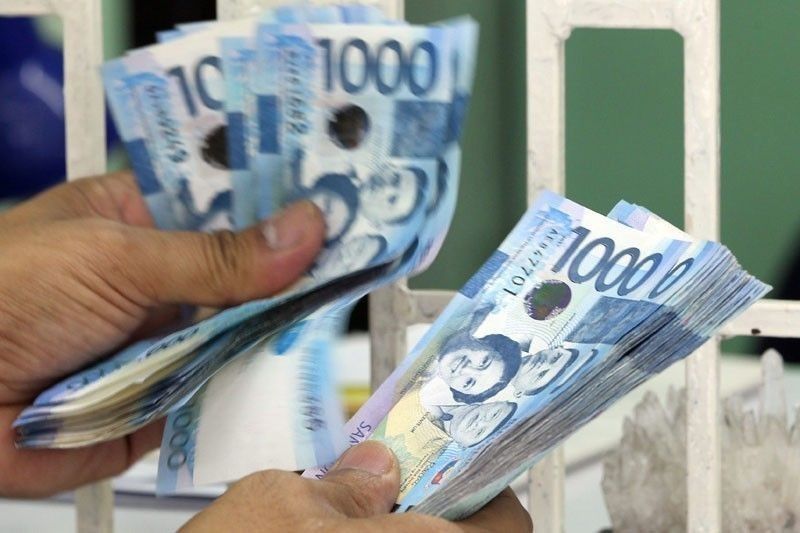Peso slumps by 9.3% in 2022

MANILA, Philippines — The peso slumped by 9.3 percent this year, hitting an all-time low of 59 to $1 in October amid the hawkish US Federal Reserve, which hiked interest rates aggressively to fight inflation.
The local currency lost 4.756 to settle at 55.755 to $1 this year from the end-2021 level of 50.999 to $1. On the last trading day of the year, the peso gained 44.5 centavos from Wednesday’s 56.2 to $1.
Michael Ricafort, chief economist at Rizal Commercial Banking Corp. (RCBC), said the performance of the peso is similar to other regional currencies such as the Indian rupee, Indonesian rupiah, Chinese yuan, Malaysian ringgit and the Thai baht.
The local currency has bounced back strongly to the 55 to $1 handle in December after slumping by as much as 15.7 percent to hit a record low of 59 to $1 in October.
According to Ricafort, the seasonal increase in remittances from overseas Filipino workers (OFWs) and export sales in the fourth quarter provided some support for the peso exchange rate especially toward the end of the year, based on the consistent patterns for many decades.
“The seasonal peak in Christmas holiday spending and the conversion of OFW remittances to pesos could have already happened shortly before Christmas, although there may still be some holiday-related spending, by a lesser extent, before the New Year celebrations. Some importers and those with immediate requirements for US dollars to finance purchases and payments abroad, just like for many years, also could have taken advantage of relatively lower US dollar/peso levels through some bargain-hunting expected toward Christmas for their immediate requirements,” Ricafort said.
To cool the red-hot inflation and stabilize the peso, the Bangko Sentral ng Pilipinas (BSP) delivered aggressive rate hikes and intervened in the foreign exchange market.
Using its huge gross international reserves (GIR), the central bank actively participated in the foreign exchange market to smoothen the volatility of the peso amid the aggressive rate hikes delivered by the US Fed.
The BSP also matched the aggressive rate hikes delivered by the US Fed point by point to maintain a healthy 100-basis-point interest rate differential.
In all, the BSP raised interest rates by 350 basis points to bring the benchmark rate to a 14-year high of 5.50 percent from an all-time low of two percent.
UnionBank chief economist Ruben Carlo Asuncion said that financial markets did not expect the US Fed’s rapid monetary policy pivot due to inflation biting back hard due to deglobalization and geopolitical tensions.
“It was the strong US dollar narrative,” Asuncion told The STAR.
Asuncion said markets may have already seen what a China re-opening can do to regional currencies and the uncertainties the said China pivot would do to markets in early 2023.
“Nevertheless, the important thing is the end of the US monetary policy cycle and consequent cuts if and when the US economy would warrant the need some propping up in the second half of 2023,” Asuncion said.
China Bank chief economist Domini Velasquez said the peso may trade between 54 and 58 against the greenback in 2023 as latest dot plot shows the US Fed funds rate peaking at 5.1 percent in 2023 before a cut.
“Although markets are still pricing in lower rate hikes and hence, we think the dollar might have reached its peak already. Our base scenario is a soft landing for the US economy in 2023. However, in the off chance of a deeper-than-expected downturn or hard landing, the USD may strengthen given its status as a safe haven currency,” Velasquez said.
On the peso side, the chief economist of China Bank said the country’s current account deficit is expected to narrow slightly in 2023 as commodity prices settle lower.
“However, weaker exports will also drag down the current account balance. Even with lower exports caused by external headwinds, remittances and other net inflow will likely provide some support,” Velasquez said.
Aside from remittances, Ricafort said other sources of strength of the peso include revenues from the business process outsourcing sector, tourism receipts and foreign direct investments as the foreign trips of President Marcos yielded $23.6 billion in investment pledges.
Ricafort said the next minor resistance level is at 56 to 56.60, while the minor support level is at 55.60 to 55.70 to the dollar.
Despite the weakening of the peso, BSP Governor Felipe Medalla believes the worst is over for the strong dollar and that the weak peso aggravating inflation is no longer a big problem.
“The worst is over for the strong dollar,” Medalla told reporters on Dec. 20.
- Latest
- Trending






























